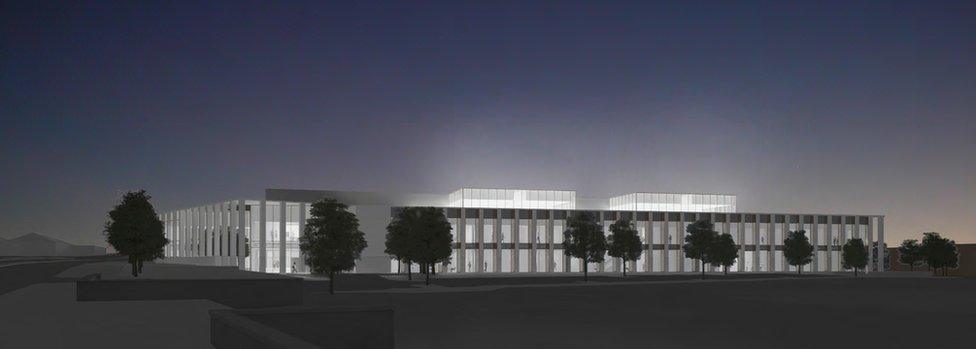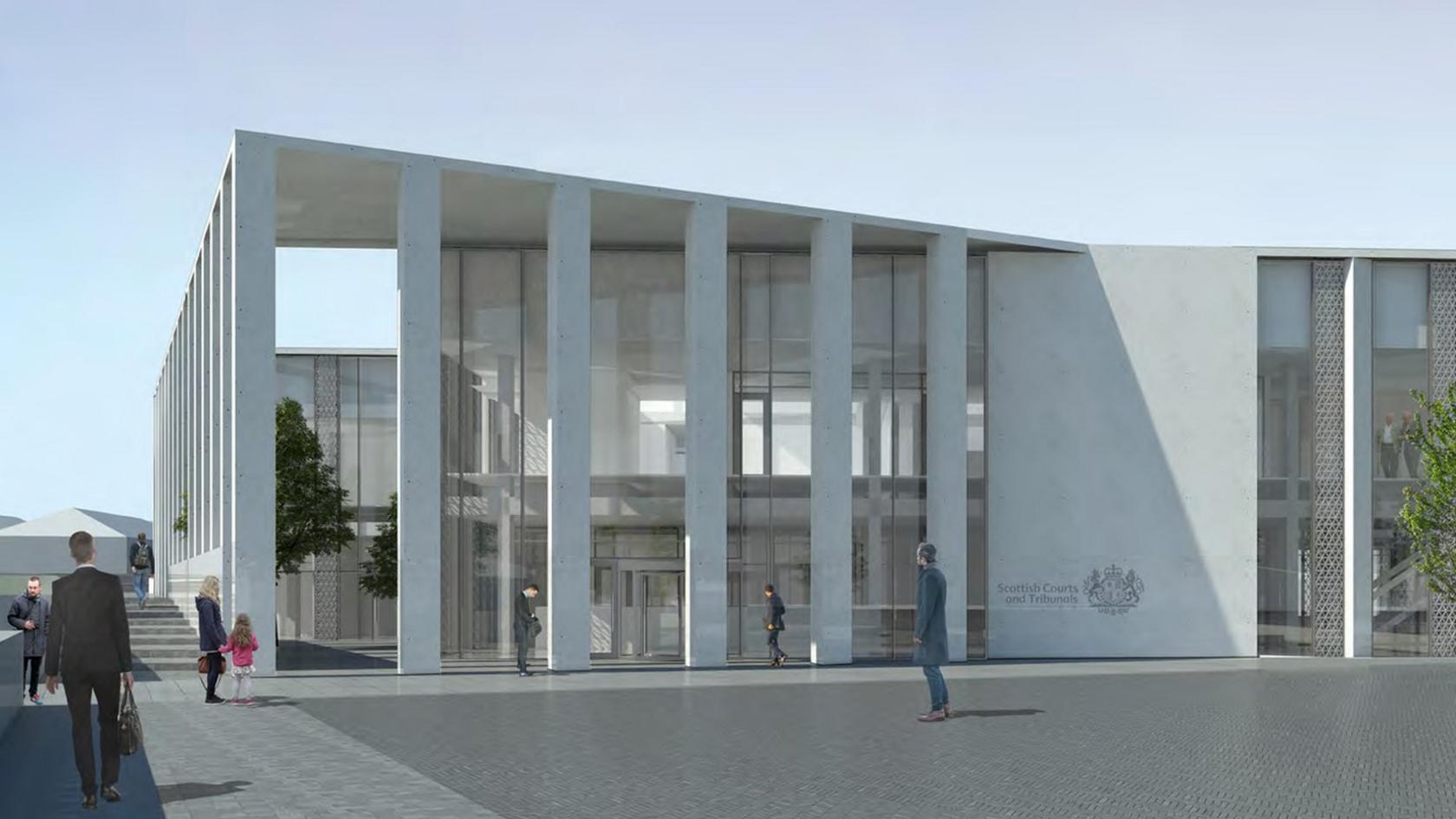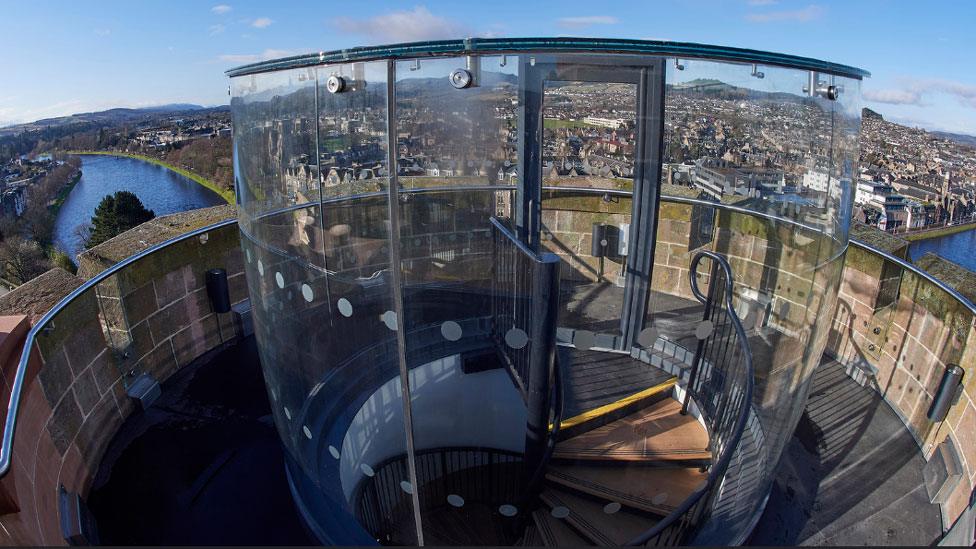Architect appointed for Inverness Castle revamp
- Published

Inverness Castle was built more than 170 years ago
An architect has been appointed to a project to transform Inverness Castle into a tourist attraction.
Built more than 170 years ago on a hill overlooking the River Ness, the property is currently the base for the city's courts service.
But the Scottish Courts and Tribunals Service (SCTS) is preparing to vacate the castle and move to a new building under construction on Longman Road.
Edinburgh and Forres-based LDN Architects have been appointed.
A creative director, Bryan Beattie, has also been appointed to the Highland Council-led castle project. It forms part of the £315m Inverness and Highland City-Region Deal.

The courts service is to move to a new building in Inverness
Art galleries, museum displays, shops, restaurants and hotel accommodation have been proposed.
Rural Economy Secretary Fergus Ewing has welcomed the latest developments.
He said: "These appointments mark another important step forward in progressing the development of Inverness Castle.
"This key project from the Scottish government is being supported through the City Region Deal. It will help to revitalise the city centre, as well as the wider Highlands, benefiting both locals and tourists."

Inverness Castle: A brief history

A French soldier's poodle is said to have survived an attack on old Inverness Castle
The sandstone Inverness Castle was built in 1836 to plans drawn by architect William Burn.
It was constructed on a mound overlooking the city and the River Ness. In 1848, a building known as the North Block was added and served as a prison.
But a castle had occupied the site from possibly as far back as the 11th Century.
Over the centuries, the fortification fell under the control of the forces of Edward I, Robert the Bruce and James I, II and IV.
In 1562, it was attacked and damaged by soldiers loyal to Mary, Queen of Scots, before it was almost destroyed by Royalist troops in the 1600s.
Bonnie Prince Charlie's forces blew the castle up in 1746 to prevent it from falling into the hands of government troops.
It was said that a French sergeant, who had brought his poodle with him to Scotland, set off the explosives.
The soldier was caught in the blast, and his body was blown across to the opposite side of the River Ness. His dog survived.
- Published8 March 2018

- Published30 November 2017

- Published19 September 2017
